Have you made a commitment to healthier eating to support your active lifestyle? If so, congratulations! Running is a fantastic way to strengthen your heart and body, but the quality of your diet is key in fueling that activity and building strength and endurance from it.
Setting an intention to eat more healthfully is a great first step, but a goal without a plan is just a wish. Following are key questions you can use to evaluate your current diet and make measurable, achievable plans for a fitter 2017:
1. Where are the vegetables?
The best quality diet is composed of about 50% vegetables with some fruit. Fresh and frozen vegetables, fruit and herbs are full of antioxidants (the fancy word for chemicals that prevent cell damage) and phytonutrients (fancy word to describe chemicals in plants that protect us from disease and help our bodies work better). Do vegetables and fruit make up half of your diet? If not, where can you include more?
2. Are you eating quality protein?
Protein repairs and builds muscle, but the best kind is found is real food, not in giant canisters of protein powder or protein-loaded candy bars masquerading as “energy bars.” Because protein is found in so many foods, it’s actually difficult to be protein deficient in America unless you’re eating a dramatically calorie-restricted diet (more on this topic HERE). Lean meat, dairy, fish and eggs provide protein, as do plenty of vegetarian options, like beans, nuts, seeds, whole grains and whole soy products like edamame, tofu and tempeh (a fermented soy product that tastes much better than it sounds). Are you leaning on bars and shakes for protein, or are you getting protein primarily from whole foods?
3. Are you eating the right kind of carbohydrate?
Carbohydrates are not inherently evil: They provide our bodies’ primary source of fuel. When you’re digging deep on a tough run, like a hill or sprint, carbs are key to getting you through your workout. They’re also a necessity on long runs and races. When we eat the best quality carbs, we also take in fiber and nutrients that help us thrive. Bagels, cookies and soda contain carbs, but so do carrots, broccoli, apples, beans, corn and oats. Where are your carbohydrates coming from?
4. What are you drinking?
Are sodas, diet soda, sugary teas, flavored coffee drinks, juice and flavored water a rare treat, or are they staples in your daily diet? Water is by far the best drink for a healthy, active person, so make it your primary source of hydration. (Note that sugary sports drinks have their place during runs 90 minutes and longer, where we may need supplemental carbohydrates to power our workouts, but otherwise, unless you are diabetic or hypoglycemic, water should suffice.)
5. Do you have a healthy post-workout snack habit?
Eating a nutritious snack after long workouts (an hour or longer) helps you gain strength and recover more quickly. Skipping that snack could lead to poor recovery and an out-of-control appetite. On the other hand, following a workout with giant greasy or sugar-loaded meal may counteract your weight management (or weight loss) goals. A widely-accepted ratio for a perfect post-run snack for a long run is 4 to 1, carbohydrate to protein. For resistance training a post-workout snack of 2 to 1, carbohydrate to protein works well. What is your post-workout snack plan? Hint: Try a home-blended smoothie with frozen fruit and a quality protein source of nuts and seeds; or whole wheat toast with banana and natural peanut or almond butter. For tough workouts, follow up with a protein-rich meal shortly after.
6. What’s your plan for when run-ger (crazy hunger experienced solely by runners) strikes?
As you increase your exercise, your appetite increases, too. Overcompensation, eating more than you need as compared with the energy you expend, is where weight management becomes a challenge. Pre-empt out-of-control hunger by planning and pre-packaging snacks and meals ahead of time. Instead of “rewarding” yourself with snacks like cookies, bagels, chips and fries, how about nourishing your hard-working body by planning snacks that include vegetables, fruit, beans, raw seeds and nuts? What will your go-to snacks or meals be?
Honestly answering these questions will help to inform your plan for better eating and a healthier you. Here’s to happy and healthy running and eating in 2017!
If you need support in formulating and adhering to a plan for healthy eating, I invite you to get in touch with me or seek the support of another health professional.
The information provided in this post should not be used for diagnosing or treating a medical problem or disease, nor is it a substitute for professional medical care.
About The Author: Lauren Shafer
Lauren is a certified Health Coach who helps busy Baltimoreans articulate their health + wellness goals, and make measurable, sustainable diet and lifestyle changes for lasting transformation. Though she would never be described as athletic in her youth, Lauren started running as an adult, begrudgingly at first, until she discovered she actually enjoyed it. Now an 9-time marathoner and 3-time ultra-marathoner, you’ll frequently find Lauren running on roads and trails with her husband John and dog Osita.
To learn more about Lauren and check out her health coaching and blog, visit www.live-full.com or www.facebook.com/LiveFullBaltimore. Contact her at lauren@live-full.com.





